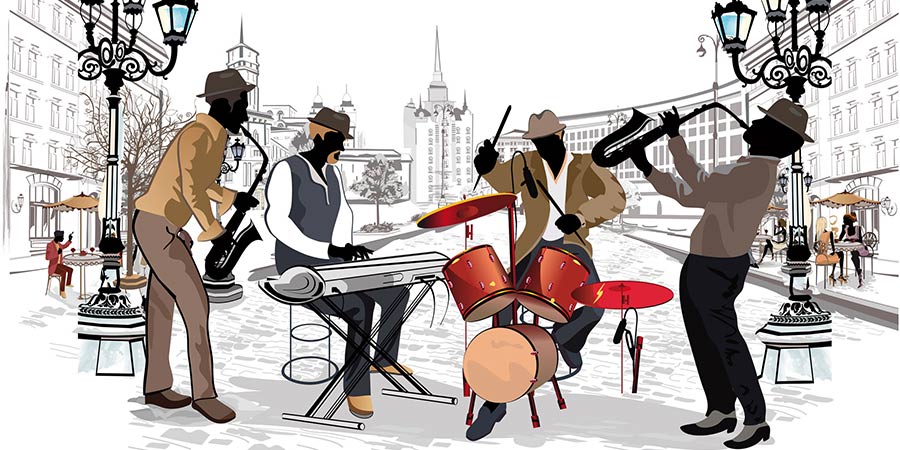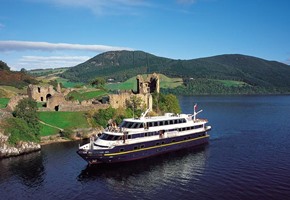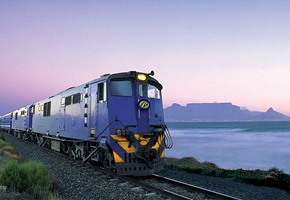The world of rail travel has had a long connection with the hallowed halls of jazz. With the rise and arguable golden age of American rail travel occurring across the first half of the 20th century, it is little surprise that a number of jazz songs of the era had some influence from our favourite mode of transport. Many jazz musicians would either travel long distance by train while touring, and the inimitable orchestra of a train and its carriages producing a symphony of rumbling tracks and locomotive horns, provides a fascinating musical influence heard on many famous jazz standards.
So, in honour of International Jazz Day on April 30th, here are some of our own personal favourite jazz numbers which touch on the subject of railway travel:
Take the A Train - Billy Strayhorn/Duke Ellington
This is really something. A masterpiece of big band composition which swings, bops and crescendos into a whirlwind of horns and scat singing, Take the A Train is one of Billy Strayhorn's most famous songs. From the onomatopoeic opening blare of Ellington's train horn piano flourish, right through to the frantic and thrilling finale featuring fast swing at its finest, this number would become a leading staple of Ellington's repertoire, covered by everyone from Ella Fitzgerald to experimental rock band Phish.
Written by the Duke's composer Billy Strayhorn in 1939, Take the A Train was inspired by Strayhorn's journey from Pittsburgh to New York. He had received directions from Ellington which began with the line 'First take the A train…'. The title of the piece came to refer to the A subway from Brooklyn across to Harlem, and today's recognised lyrics actually come from one of the band's singers, the twenty-year-old Joya Sherrill. These are the words sang famously by Ella and parodied by joke singers Jonathan and Darlene Edwards. The song, as performed by the Duke Ellington band, also made an appearance in the musical extravaganza film Reveille with Beverly.
Beginning in with the aforementioned downward flourish, made to sound like the horn from an oncoming train, Take the A Train launches immediately into its main motif. This curious melody jumps across the scale, before resolving back into its home key, all of which rests over a classic 1940s swing rhythm of which Ellington was the undisputed master. Employing the classic AABA form, the piece replays the main motif, usually with a singer, before launching into a contrasting and laid back slink of a B section. The finale launches back into the bombastic theme tune, sounding for all the world like a freight train hurtling down a tunnel.
My personal favourite version of this classic is the Duke's own from his HI-FI Ellington Uptown album in 1951. Featuring vocals from the fantastic Queen of Scat Vocals Betty Roche, this recording just sounds stunning, as exciting as it is complex, complemented by Paul Gansalves sultry sax solo.
Blue Train - John Coltrane
In my humble, and perhaps contentious, opinion, this is one of the top three jazz saxophone albums of all time. Only his second album as a leader, Coltrane take cues from his previous band leaders Miles Davis and Thelonious Monk in order to craft a hard bop album of the highest order. Alongside the sublime beauty of I'm Old Fashioned and the fast jazz of Lazy Bird sits the swung and soulful eponymous track, Blue Train.
By 1957, John Coltrane was clean from Heroin consumption and was holding down a regular club spot with jazz piano master and complex harmony enthusiast Thelonious Monk. It was during this time that the Blue Train album was recorded on the Blue Note label and shows much of Monk's influence in the tritone substitutions and thematic content. Coltrane's personnel on the track is an exciting prospect, two of whom (bassist Paul Chambers and Drummer Philly Joe Jones) Trane had previously played with in Miles Davis' quintet. Others would later find their success alongside other jazz legends such as Art Blakey.
The tune itself is an original composition, a 10-minute blues odyssey which begins in an almost somber manner with a combined horn callout, answer by dull piano, bass and drums. After several calls and responses, it launches into a swinging section featuring solos from each band member in true bebop style. Coltrane's opening solo is just wonderful. Making some astonishing leaps and bounds as he zips over the accompanying bass and drums, his music is very clearly influenced by Charlie Parker's work as he combines complex harmonies to produce something truly specially and intrinsically blues. Also of note in this track is Lee Morgan's trumpet solo which manages to do something entirely different, but which still fits in with the blue theme of Blue Train. He introduces several ideas, messing around with them in wild and interesting ways before discarding them as he sees fit. It's only two minutes long, but the ground he covers is astonishing.
Blue Train may not be explicitly about trains like Take the A Train, but it's barreling blues and relentless swings gives it a strong on-the-track feeling which never really stops experimenting.
Chatanooga Choo Choo - Harry Warren/Glen Miller
Finally, let's finish on what has to be the most joyful, upbeat and gosh-darn happy jazz pieces about trains. Chatanooga Choo-Choo is classic Big Band swing, played in a major key and featuring an instantly identifiable and poppy melody as its main theme and motif. This song was immensely popular during its time, famously so in fact, as it was the first ever record to go earn gold status from the RCA, selling 1.2 million copies.
Written by cinematic musician Harry Warren, this catchy number was provided for 1941's Sun Valley Serenade musical with its most recognizable version recorded by Glen Miller's wonderful big band. The band itself featured in the film playing Chatanooga Choo Choo, which featured an elaborate singing section sung by singer Tex Beneke and the Modernaires and a tap dancing segment from the Nicholas Brothers and Dorothy Dandridge.
Beginning with the trombones offering the sound of a train horn, and the horns providing the tracks of the engine, the song immediately launches into a swinging rendition of the head theme. It's spirited and joyous, happy jazz for happy people. The tune is an earworm, and rightly so, for its major and jolly melodies are really something to listen to. The sung segment is really given a great work over by Tex Beneke and the Modernaires, and with all that packaged up, it's no wonder this track is popular enough to go gold.






